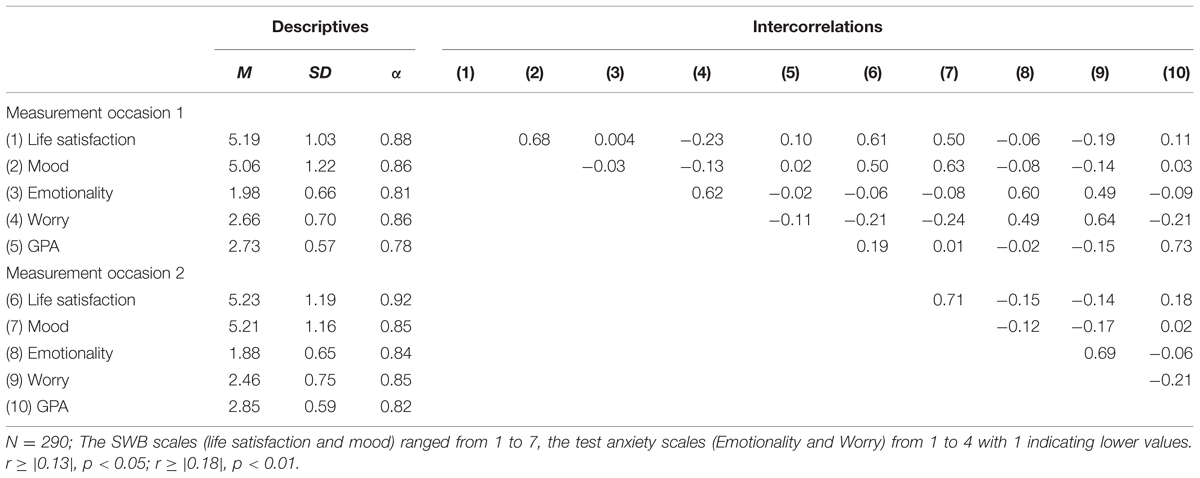Test Anxiety Inventory Spielberger Pdf
Various tests have been conducted using the State Trait Anxiety Inventory (STAI) and it has provided adequate evidence to. Reliability and validity of State Trait Anxiety Inventory was suitable and acceptable. Anxiety is an emotional state consisting of feeling tensed, apprehension, and nervousness (Spielberger et al.
State Trait Anxiety Inventory Pdf
. 125 Downloads Abstract One session of Eye Movement Desensitization and Reprocessing (EMDR) appeared to be an effective treatment for test anxiety, reducing reported physiological distress, worry, and fears of negative evaluation. The research design included two components: a comparison study, comparing Immediate Treatment and Wait List groups, and a replication study, comparing the treatment response of Immediate and Delayed (Treated Wait List) groups. Seventeen test anxious university students were randomly assigned to one session of EMDR or Wait List. At post-test, the Immediate group demonstrated significant improvement, compared to the Wait List group, on the Test Anxiety Inventory (TAI) and Fear of Negative Evaluation Scale. Treatment effects were maintained at follow-up.
The Wait List group received treatment after post-measures were taken. Treatment of the Delayed group replicated effects. Improvement was reflected by large treatment effect sizes and a decrease in percentile ranking on the TAI from the 90th to the 50th percentile.


Test Anxiety Inventory Test Anxiety Inventory Purpose: Designed to measure test anxiety. Population: High school and college students. Score: Percentile ranking. Time: (8-10) minutes. Author: Charles D. Publisher: Consulting Psychologists Press, Inc.
Description: The Test Anxiety Inventory (TAI) is a self-report inventory designed to measure test anxiety (TA) as a situation-specific personality trait. Pnach file editor. The TAI consists of 20 items or statements, and the respondents indicate on a four point Likert-type scale how often they experience the feeling described in each statement. The TAI provides a measure of total TA (TAI-T) as well as measures of two TA components-worry (W) and emotionality (E). Scoring: The TAI is a brief instrument occupying one side of a page on which the 20 items are printed. The total TAI score (TAI-T) is based on all 20 items.
Test Anxiety Inventory Spielberger Pdf Template
Eight of the items measure the W component and 8 items measure the E. Four items that load on both subscales contribute to the TAI-T score but are not scored on either the W or E subscales. Percentile ranks are calculated from the raw scores. Reliability: Test-retest reliabilities for TAI-T are reported for groups of high school, college, and graduate students over time periods ranging from two weeks to six months. Reliability was in the range of.80 to.81 for two-week to one-month periods with all groups. After six months, the reliability was.62 for a group of high school students. The alpha coefficients for TAI-T ranged from.92 to.96; for the subscales, alphas ranged from.83 to.91 for TAI-W, and from.85 to.91 for TAI-E.
Validity: The relationship between the TAI and its subscales with other anxiety measures (e.g., Sarason’s Test Anxiety Scale (TAS), Liebert & Morris’ Worry and Emotionality Questionnaire (WEQ), the STAI State and Trait Anxiety scales, and the STAI State Anxiety scale administered under examination stress conditions) all provide evidence of convergent validity. The correlation between the TAI-T score and the TAS was sufficiently high (.82 to.83) to suggest that the two scales measure essentially the same construct. Norms: The normative sample consisted of high school and college students.
Suggested Uses: The TAI is recommended for use in research and clinical settings.